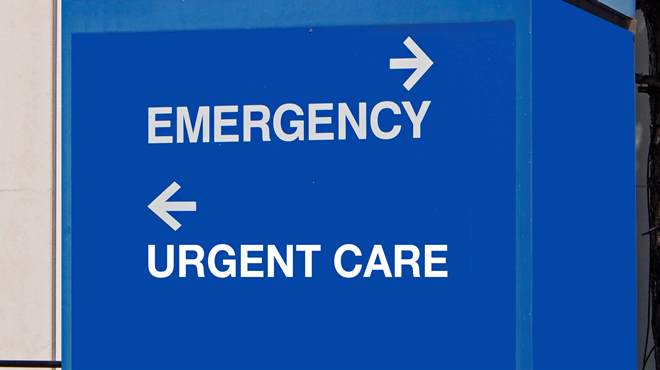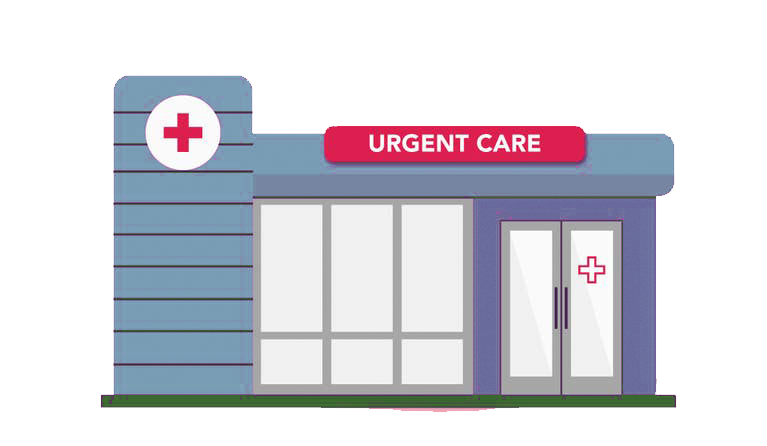Urgent Care vs. Health care: Which Is Right for Your Requirements?
Urgent Care vs. Health care: Which Is Right for Your Requirements?
Blog Article
The Role of Urgent Treatment in Managing Everyday Health Emergencies and Minor Injuries
Immediate care facilities have emerged as a vital resource in the health care landscape, dealing with a plethora of day-to-day wellness emergencies and minor injuries with remarkable efficiency. urgent care. These centers not just provide immediate care for problems that do not demand a visit to an emergency clinic, however they also serve to alleviate the strain on traditional health care systems. As we explore the range of services used, the common conditions dealt with, and the general benefits of urgent care, it becomes important to take into consideration how these facilities affect client end results and health care availability in our areas
Comprehending Urgent Treatment Provider
Immediate treatment services function as an important bridge between medical care and emergency clinic treatment, attending to a large range of non-life-threatening wellness issues that call for instant attention. These centers offer prolonged hours, usually consisting of evenings and weekend breaks, that makes them obtainable for individuals that can not arrange consultations with their primary treatment companies.
Usually staffed by a group of medical care professionals, consisting of medical professionals, registered nurse professionals, and doctor aides, immediate care centers are furnished to carry out diagnostic examinations, carry out therapies, and offer standard treatments. This capacity allows them to successfully take care of a variety of conditions that, while not needing emergency situation care, still necessitate timely treatment to prevent problems.
In addition, immediate care solutions are designed to reduce the concern on emergency departments, enabling hospitals to concentrate on critical instances. Patients can anticipate shorter delay times and an extra efficient treatment process, more improving the total medical care experience. With the capacity to accommodate walk-in patients, these centers work as an essential source for those seeking prompt treatment without the need for a consultation, connecting the space in medical care ease of access and making sure that people receive appropriate treatment when they need it most.
Typical Conditions Dealt With
A variety of common problems can be successfully dealt with at immediate care centers, making them an excellent choice for individuals looking for instant alleviation. These centers are equipped to take care of a variety of minor injuries and health and wellness concerns that do not call for the extensive sources of a healthcare facility emergency clinic.

Immediate care facilities also satisfy skin disease, consisting of breakouts, insect attacks, and small burns. Patients struggling with urinary system infections or those requiring physical examinations, inoculations, or regular laboratory tests can likewise find reliable services at these centers.
Advantages of Urgent Care
 Clients seeking therapy for common problems at urgent treatment facilities profit from numerous crucial advantages that improve their medical care experience. One considerable benefit is ease of access; urgent treatment centers typically use extended hours, consisting of evenings and weekends, enabling patients to get treatment when typical doctor might be unavailable. This versatility can be important for people with hectic routines or those calling for instant attention outside normal office hours.
Clients seeking therapy for common problems at urgent treatment facilities profit from numerous crucial advantages that improve their medical care experience. One considerable benefit is ease of access; urgent treatment centers typically use extended hours, consisting of evenings and weekends, enabling patients to get treatment when typical doctor might be unavailable. This versatility can be important for people with hectic routines or those calling for instant attention outside normal office hours.In addition, urgent treatment centers provide prompt service with minimal delay times. Numerous facilities use structured processes to guarantee that patients are seen quickly, decreasing the aggravation often connected with emergency clinic check outs. This efficiency enables rapid diagnosis and therapy of small injuries and health problems.
Furthermore, immediate care facilities are furnished to take care of a range of problems, from sprains and fractures to infections and allergic reactions. They usually have on-site analysis capabilities, such as X-rays and laboratory examinations, facilitating extensive care in one location.
Last but not least, immediate treatment centers normally have reduced out-of-pocket costs contrasted to emergency clinic, making them a more cost-effective option for non-life-threatening problems. These benefits jointly make urgent treatment an appealing choice for people seeking timely and effective medical attention.
## When to Select Urgent Treatment
Figuring out the suitable level of care is essential for resolving wellness worries efficiently. Immediate treatment facilities work as a crucial resource for people experiencing non-life-threatening problems that require prompt interest. Situations necessitating a see to urgent treatment include minor injuries such as cracks, sprains, or lacerations, in addition to illnesses like influenza, bronchitis, or urinary system system infections.
Furthermore, immediate care appropriates for conditions that may not demand an emergency room see but still call for timely treatment (urgent care). Symptoms such as moderate abdominal discomfort, consistent throwing up, or minor sensitive reactions can often be taken care of at these facilities. Urgent care facilities generally give diagnostic services, consisting of X-rays and laboratory tests, making it possible for a thorough method to treatment
It is critical to differentiate between immediate treatment and emergency care. If an individual shows severe signs such as upper body pain, problem breathing, or considerable article injury, they should seek emergency medical help immediately. Acknowledging when to use urgent care can streamline the healthcare process, ultimately resulting in quicker recovery and more reliable use medical resources.
Cost-Effectiveness and Availability
While several people focus on prompt care for their health and wellness worries, the cost-effectiveness and access of immediate treatment centers site play a crucial duty in their total allure. Immediate treatment centers are designed to provide prompt clinical focus for non-life-threatening problems, usually at a portion of the expense connected with emergency space sees. This affordability makes them an attractive option for patients looking for prompt treatment without the troublesome expenses typically sustained in hospital setups.

Furthermore, many immediate treatment centers approve a vast array of insurance policy strategies and supply transparent prices for without insurance people, further improving their availability. By linking the void in between health care and emergency situation solutions, immediate treatment centers act as an essential source, ensuring that individuals receive timely and economical take care of everyday health emergencies and minor injuries.
Conclusion
Immediate treatment facilities are crucial in addressing everyday health emergencies and small injuries, giving obtainable and prompt treatment for non-life-threatening conditions. By offering a large range of services, consisting of on-site diagnostics, immediate care enhances patient end results while lowering the pressure on emergency situation departments. The availability of extended hours and reduced expenses even more underscores the importance of immediate care as an important element of the healthcare system, making certain that people receive appropriate treatment when needed most.
Additionally, immediate care facilities handle lacerations and minor cuts, giving needed suturing and wound care. One considerable advantage is availability; urgent treatment facilities usually supply prolonged hours, including nights and weekends, permitting individuals to receive treatment when traditional health care companies may my sources be inaccessible.It is important to differentiate in between immediate care and emergency situation care.While lots of people prioritize prompt care for their health and wellness concerns, the cost-effectiveness and availability of urgent care centers play an essential function in their total appeal. The accessibility of extended hours and lower prices further highlights the relevance of urgent care as an essential component of the health care system, making certain that people receive proper care when required most.
Report this page